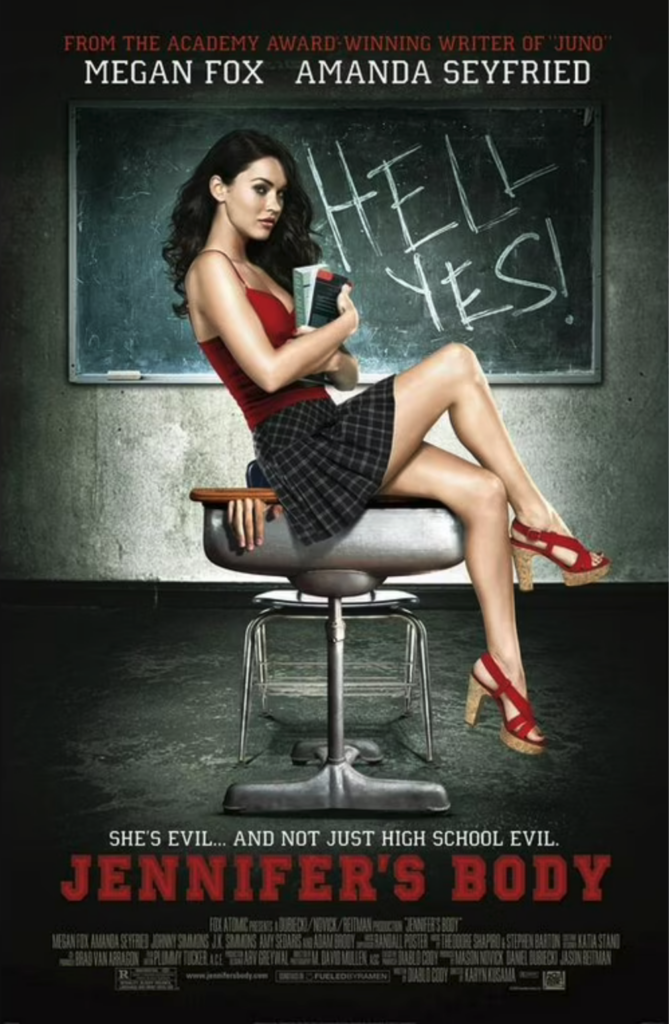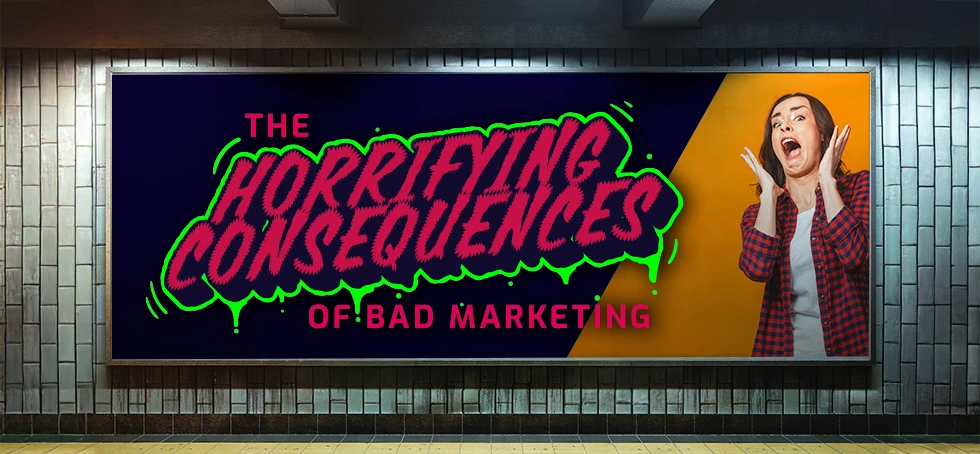Fall is creeping in and as the ice-cold fingers of frosty mornings wrap around our city, I find my thoughts consumed by a particularly horrifying marketing failure. One that every advertiser should know of and learn from. The comedy horror film, Jennifer’s Body, was released in 2009 and though it is now touted as a cult classic, critics and moviegoers regarded its initial premiere as a complete misfire.
More movie classics once considered visionary are aging poorly at a rapid rate (I’m looking at you Sixteen Candles). Yet others, like Jennifer’s Body, have surpassed initial box office failures to become streaming successes. But as you gaze deeper into the lead up of the Jennifer’s Body debut, a frightening tale of mismanaged advertising strategies starts to emerge.
Setting the stage for a scary good cult classic
When Diablo Cody sat down to write her first horror script, she was inspired by something that terrified her; teenage girls. Specifically drawing on the complexity of girlhood emotions and toxic friendships, Cody crafted a feminist tale that encapsulated the frightening experience of being a teenage girl. With the addition of some black magic and demonic monsters.
For the readers who may not have had the pleasure of watching the movie, here’s a quick recap:
The plot of Jennifer’s Body is told through the perspective of main character Anita “Needy” Lesnicki, an insecure teenager who is best friends with popular cheerleader, Jennifer Check. After the girls go to see a failing indie rock band at the local dive bar, a suspicious fire leads to Jennifer leaving with the band. Despite Needy’s protesting, she watches as her BFF climbs into the van and drives off. Later that night, Needy finds Jennifer in her kitchen covered in blood and spewing dark liquid. On top of Jennifer’s increasingly bizarre behavior over the following weeks, local teenage boys start to go missing at an alarming rate. This leads Needy on a terrifying investigation that tests her friendships and uncovers the brutality of being a teenage girl.
A titillating story to say the least, the film dives deep to explore a number of heavy themes, including sexual assault, the codependent undertones of teen friendships, and much more. While some of the criticism in regard to the story’s structure and pacing holds merit (depending on who you ask), the film has undergone a resurgence in recent years as it’s been rediscovered by the female audience it was written for. So, when the movie was released, why exactly did it end up being a box office failure? You need only look at the original marketing strategy.
Movie flop or murder by misguided marketing?
Based on the movie promotions, it seems likely that the team the studio enlisted to market Jennifer’s Body was mostly men. Rather than honing in on the movie’s women-empowerment messaging and feminist tone, the initial advertising promised a much different version of the film.
 Let’s make it clear, Diablo Cody wrote this movie for the girls. Its central themes highlight the more toxic aspects of girlhood, and the narrative is driven by its two female leads. However, based on the trailer and marketing posters, the advertising team and studio executives decided to rely heavily on the sex-appeal of Megan Fox, spotlighting it in almost every iteration of the trailers and posters.
Let’s make it clear, Diablo Cody wrote this movie for the girls. Its central themes highlight the more toxic aspects of girlhood, and the narrative is driven by its two female leads. However, based on the trailer and marketing posters, the advertising team and studio executives decided to rely heavily on the sex-appeal of Megan Fox, spotlighting it in almost every iteration of the trailers and posters.
For many people, their first introduction to Megan Fox on screen was alongside giant robots that turn into cool cars. (Aside from the few who know her from the all-time classic that was Confessions of a Teenage Drama Queen). Once she was pigeonholed as a Hollywood sex symbol, there was seemingly no going back and marketers for Jennifer’s Body used that impression to sell the film to boys who wanted to ogle at her on the big screen once again. And it completely put off the girls and women the movie was trying to appeal to. When her fanboys filled theater seats, they expected to watch Megan seduce them through the screen, wishing she was biting them instead. But that is not what they got. In fact, the scenes in which main character Jennifer is seducing boys to later feast on their entrails are not meant to be sexy. They’re just downright terrifying.
Luckily, despite the outcry of disappointment from original moviegoers, Jennifer’s Body has finally found the audience it was meant for. It was even cited as one of the best horror movies directed by a woman. However, when it comes to advertising products to consumers, we don’t always have the leisure of waiting for the right demographic to stumble upon whatever we’re selling.
Avoid the fatal mistakes of Jennifer’s Body
The advertising behind Jennifer’s Body encapsulates two big marketing errors:
1. Misunderstanding the product and who it is intended for.
2. Creating false promises that ultimately lead to disappointed consumers and bad reviews.
I do not fault the critics and fanboys who left theaters underwhelmed and disappointed. The movie was never really meant for them, but the advertising promised that it was. I can’t say for sure if the marketing team never watched the movie they were selling or simply figured Megan Fox’s status as the Hollywood “hot girl” was enough to sell tickets. But it goes to show that sex appeal alone isn’t always a golden ticket to advertising success.
Rather, it is important to take the time to truly understand the product and its benefits, so we are able to identify the demographics that are most likely to take action and feel satisfied with their decision. Much like Jennifer seeking out the perfect boys to seduce into becoming her victims for consumption…
